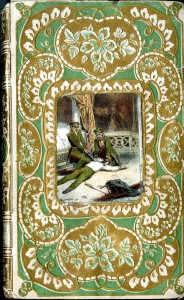
Jean de Marlès, Histoire de Russie depuis l’origine de la monarchie jusqu’à nos jours (1857). From the M.S. Anderson Collection at Senate House Library
In a major piece of research facilitation, IES Associate Fellow Dr Karen Attar is editing the third edition of the Directory of Rare Book and Special Collections in the United Kingdom and Republic of Ireland for CILIP’s Rare Books and Special Collections Group.
The previous edition (1997) – of which there are two copies in Senate House Library and one each in the libraries of the Warburg Institute (NMM 2000.D36 ), the Institute of Historical Research (B Ref.0/Rbg/1997), and IALS (Depository 41395) – remains an indispensable reference work. In no other printed or electronic source for printed books can one look up collections across the British Isles for the answers to such questions as “Where do I find sixteenth-century French imprints / W.W. Skeat’s library / Victorian books about railways?”. While individual websites are the place to learn detailed background information about the collections of a given institution, the Directory informs researchers of what is available nationally and directs them to the libraries which are most relevant for their research needs.
But the rare books scene has changed greatly since 1997, such that a new edition is well and truly due. In the seventeen years libraries which have passed since the last edition, libraries have amassed a multitude of collections covering a wide range of subjects. Senate House Library alone has in that time acquired among others a collection of some 1,850 titles printed between 1525 and 1917 illustrating western perceptions of Russia (the M.S. Anderson Collection); the poet Walter de la Mare’s working library and multiple editions and translations of his works and the Ron Heisler collection of about 50,000 items relating to labour and radical political movements. Collections have been transferred or dispersed. Libraries have changed their identities: for example, Senate House Library is to be found under “U” for “University of London Library” in the 1997 Directory. Excitingly, new libraries have come into being. The new edition will also benefit from having descriptions of relevant collections not reported in 1997, such as Sigmund Freud’s library at the Freud Museum in Hampstead, with his annotations in numerous books. Moreover, progress in online cataloguing has improved libraries’ overviews of their collections, facilitating greater precision and accuracy of information than hitherto.
The 2015 Directory will provide contact details and urls for repositories housing special collections, potted histories of libraries describing their rare books generally, and brief descriptions of named special collections (groups of books which are kept together, identifiable as discrete collections). And by providing a snapshot of special collections at the time of publication, the Directory will provide a unique insight into the state of printed special collections and where they are going.
The Directory has its own blog.
